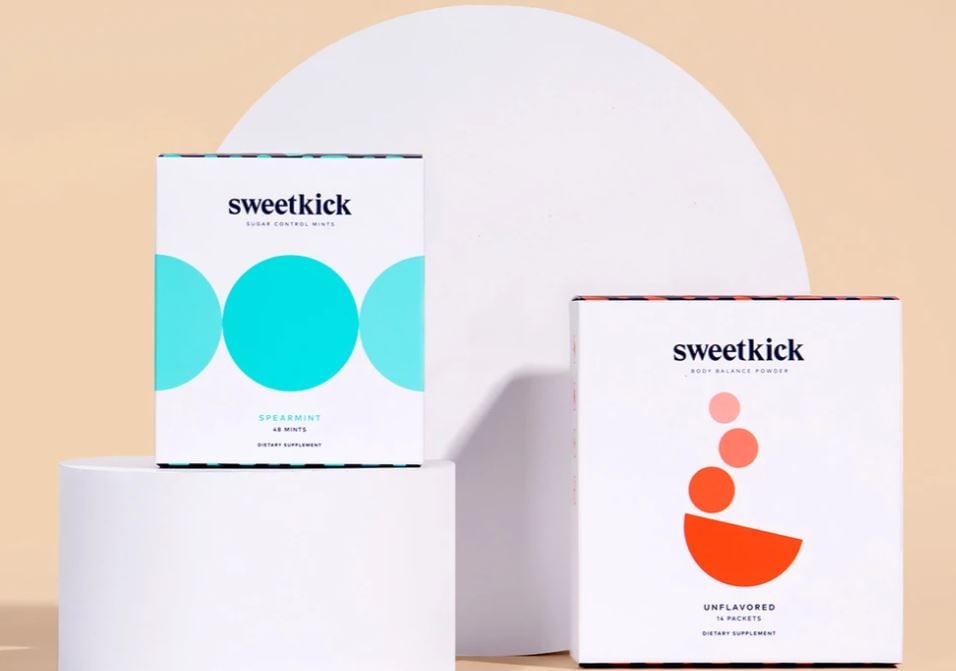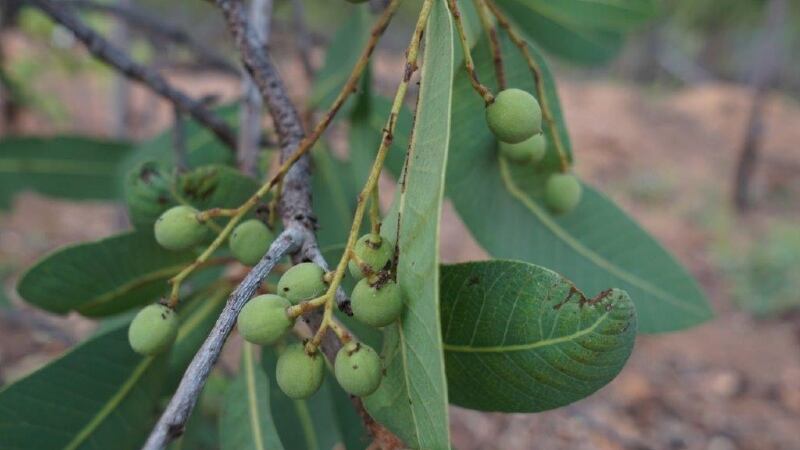Conducted at Massey University, researchers assessed the efficacy of the US product Sweet Kick, which contains gymnemic acids from the gymnema sylvestre (GS) plant. It is traditionally used in Ayurvedic medicine, aptly its name in Hindi is “sugar destroyer”.
One of the researchers, Associate Professor Ajmol Ali from the University’s School of Sport, Exercise and Nutrition said the findings demonstrated that the mint had the potential to help people reduce their sugar consumption.
“We are eating more added sugar than ever before, so this compound has great potential to help people reduce their high consumption of sugary food and beverages and move to healthier options. When the treats stopped tasting good, people ate less.”
The study was published in the Nutrients journal.
Beginnings of study
A/P Ali told us the idea first came about when he met Sean Byrne, the co-founder of Sweet Kick in April 2019 at a wedding.
His research team conducted the study around the time when Sweet Kick was officially launched in the US market at the end 2019.
In this single-blind study, 56 healthy adults (18 to 50 years) were recruited in New Zealand. Participants had to attend two sessions, one session where they were in the intervention group (Sweet Kick mint) and the other in the placebo group.
The placebo mint contained the same base ingredients as Sweet Kick, except without GS and inulin. A search on Sweet Kick’s website found the other ingredients were sorbitol, natural and artificial flavor, magnesium stearate, and silicon dioxide.
Subjects were asked to first rate their hunger levels 30 seconds before the start of the experiment. They were then tasked to consume a standard serving of their selected chocolate bar (e.g. Nestle KitKat, Whittaker’s Almong Gold, Twix, Snickers etc). Chocolates varied between 14 to 18 g, with calories between 292 to 370 kJ.
Following the chocolate consumption, participants were asked to rate the pleasantness perceived from eating the chocolate, and their desire for further servings.
They were then given the mint, which took about 90 seconds to dissolve completely in their mouth, before rating their hungry level again and consuming a second serving of the same chocolate.
The pleasantness and desire to receive a future serving was recorded. Following this, participants were given the option to continue or to stop. If participants confirmed that they would like another serving of chocolate it was given, and the above process was repeated for up to five servings after the mint was ingested.
Sugar destroying effect
Participants were reported to eat 21.3% fewer servings of chocolate after the Sweet Kick mint, compared to placebo.
Consumption of the mint also resulted in a 22.7% decrease in desire to eat high-sugar sweet foods and 31.0% reduced pleasantness of high-sugar sweet foods eaten.
For participants who self-identified as having a “sweet tooth” had a greater reduction in both the pleasantness of eating high-sugar sweet foods and desire to eat more after consuming the mint compared to those who do not.
A/P Ali explained that gymnemic acids have a similar structure to glucose molecules. It is able to mask the effects of sweetness as it blocks the type 1 taste receptors (T1Rs) on the tongue, losing the ability to taste sweetness temporarily.
“For example, if you eat a chocolate, you will taste the bitter compounds rather than the sweet taste. In biscuits, you get the starchy taste (could even taste like cardboard) instead of sweetness you expected.”
He told us that once the mint touches the tongue, the effect kicks in almost immediately. In terms of the duration, he said the effects last an average of 30 to 45 minutes.
The current study did not report any side effects from the GS intake, although researchers said the long-term effects of consumption should be assessed in future studies.
Future research should also look at other issues such as if people would potentially turn to salty or fatty foods as a result of not being able to consume sweet foods, A/P Ali said.
Follow-up study
A/P Ali and his team have also conducted a second study. The 14-day study had recruited 60 participants who were tasked to consume the Sweet Kick mint thrice a day (mid-morning, mid-afternoon, post dinner). He explained these time points were selected as people were most likely to reach for a sugary snack or drink.
Their sensory perception of sweet products was compared before and after 14 days.
In addition to this, participants were followed-up four weeks later to observe if there were any sustainable effects or behavioural changes.
A/P Ali said the second study included a qualitative focus group to understand participants use of this product to manage their sugar intake and cravings overtime, which the first study was unable to capture.
It was interesting to note while it was capped at three mints a day, some individuals took only one mint because it made them more mindful of their sugar intake, others took it only when they craved sugar.
The manuscript will be published a few months later.
A/P Ali is also part of the Beverage Lab in New Zealand, which consist of professionals from the food industry and academia at Massey University to develop innovative health, wellness and performance beverage concepts for the global market.
He told us there were several projects underway, in various stages. One project was a study on vegetable juice to reduce blood pressure in younger and older adults. Another project looked at fruit and vegetable juice for better glucose control for the pre-diabetic population.
Source: Nutrients
https://doi.org/10.3390/nu12041046
“Consuming Gymnema sylvestre Reduces the Desire for High-Sugar Sweet Foods”
Authors: Sophie Turner, et al.




